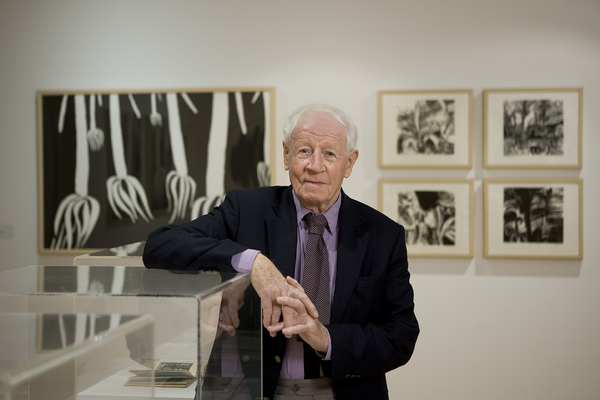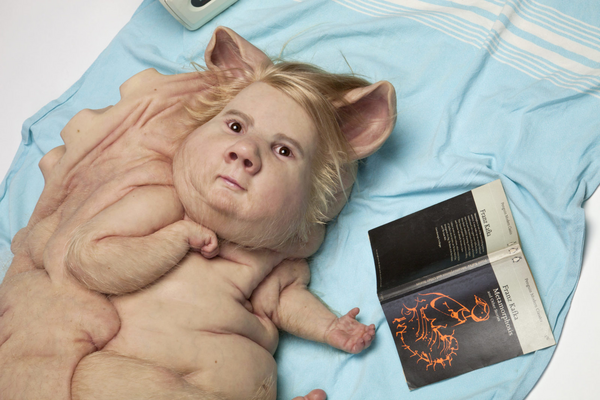
Culture Quiz: RMIT Gallery
RMIT Gallery presents a diverse, thought-provoking and unique program of exhibitions and events each year that showcases the work of emerging and established artists and curators.
RMIT Gallery has taken the global pandemic in its stride and thoughtfully adapted to accommodate a world where physical exhibitions have been placed on pause. Throughout its history, the Gallery has committed to elevating student voices and presenting to the public beautifully curated exhibitions. RMIT Gallery can’t wait to welcome students back to campus in 2021.
We hope you enjoy this quiz celebrating one of RMIT and Melbourne’s cultural treasures, and don’t forget to come back next week for our Writing and Publishing CQ.
Quiz
1. RMIT Gallery opened on 16 March 1977, with an inaugural exhibition of 40 works by John Brack. The Gallery is located in one of the University’s most iconic buildings, with a reputation as a major architectural site of the city. What is the name of the building?
a) Swanston Academic Building
b) Building 100
c) Storey Hall
d) RMIT’s New Academic Street
c) Storey Hall. Throughout its long, colourful history, the building has played a part in the cultural life of Melbourne – from social and political protest to its current role as a significant contributor to the city’s arts and exhibitions calendar.
2. Exhibiting from October 2020 until March 2021, what is the title of the online exhibition that combines personal creations from 2020 with works in the public domain?
a) The new (ab)normal
b) Pleasure
c) Museum of Me
d) Bruised: Art, Action, and Ecology in Asia
c) Museum of Me. Students of RMIT were invited to curate this exhibition by selecting works from the RMIT Collections alongside works of art in the public domain, as well as their own practice. As a way to adapt to the changing world, curator Amy Bartholomeusz said Museum of Me “[transcends] traditional notion of what we understood the gallery to be”. Check out more here.
3. Who was labelled The Godfather of Australian Printmaking?
Hint: RMIT Gallery celebrated their life with a retrospective exhibition in 2011 and was featured in the 2018 Chaos & Order exhibition.
a) George Baldessin
b) Roger Kemp
c) Brett Whiteley
d) Tate Adams

d) Tate Adams. Adams had a prolific career and established the artist print department at RMIT in 1960. He was named a Member of the Order of Australia for his contribution to publishing and the arts, particularly through his preferred medium of printmaking. He spent the later years of his life adapting to his changing health conditions while still creating pieces of visual media. He contributed greatly to the history of printmaking of Melbourne, making the retrospective exhibition all the more important. You can read more about his retrospective here.
4. In 2021 RMIT Gallery is very proud to be presenting a new exhibition titled Future U. What unusual material is featured in the adjacent work?
a) human fingernails
b) pig skin
c) human hair
d) pig hooves

c) Human hair. This is Patricia Piccinini’s Teenage Metamorphosis. The piece is comprised of silicone, fibreglass, found objects and human hair. Piccinini’s piece will be featured in RMIT Gallery’s 2021 exhibition Future U, which seeks to question the implications of rapid technology advancements and how these changes will affect our livelihoods. Read more about Future U here.
5. Featuring contributions from over 40 artists, what is the title of the exhibition announced by RMIT Gallery as a response to the COVID-19 crisis?
The new (ab)normal. The exhibition provides a timely snapshot that celebrates art created at this unusual time, and how it can provide connections when physically distant from one another. Staff, students and industry partners of RMIT’s School of Art have all contributed. You can read more about the exhibition here, and hear a presentation by the curators and artists here.
6. Let’s go behind the scenes. This work has been shipped from Moorabbin and had quite a ride. What is the work called?
a) Impossible Cornucopia
b) Gratuitous Garland
c) The seductive shepherd
d) The bumpy ride

a) Impossible Cornucopia by William Eicholtz. RMIT Gallery exhibits a broad range of work – both large and small. This piece proved to be quite a challenge in bringing into the gallery. You can see more behind-the-scenes shots here.
7. Pleasure was a 2019/20 exhibition that took place at RMIT Gallery. One of the works by Ciara Murphy, who was a graduating student at the time, is made of nails. What was the artwork called?
Hint: it features on the RMIT Gallery Instagram.
a) 40 kgs
b) 25 kgs
c) 80 kgs
d) 100 kgs.
c) 80 kgs. You can see a film of Murphy wearing the work as part of her performance here. The works in Pleasure centre around the body as a site of celebration, joy and expression. They explore how the body has been used as personal, provocative and political canvases from the 1980s until recent times. You can take a virtual tour of the artworks here.
8. The Image Looks Back was scheduled to open the week that RMIT Gallery had to close due to government restrictions. Which member of the curatorial team presented a virtual talk discussing the exhibition's works?
a) Daniel Palmer
b) Alison Bennett
c) Shane Hulbert
d) Rebecca Najdowski
c) Shane Hulbert. The Image Looks Back is a photographic exhibition that intends to explore photography and begs the question of how truth and human experience can be shaped by new visual technologies. Shane Hulbert gives a virtual tour of the exhibition that you can watch here. The exhibition is now due to open in January 2021.
- PEG
Acknowledgement of Country
RMIT University acknowledges the people of the Woi wurrung and Boon wurrung language groups of the eastern Kulin Nation on whose unceded lands we conduct the business of the University. RMIT University respectfully acknowledges their Ancestors and Elders, past and present. RMIT also acknowledges the Traditional Custodians and their Ancestors of the lands and waters across Australia where we conduct our business - Artwork 'Sentient' by Hollie Johnson, Gunaikurnai and Monero Ngarigo.